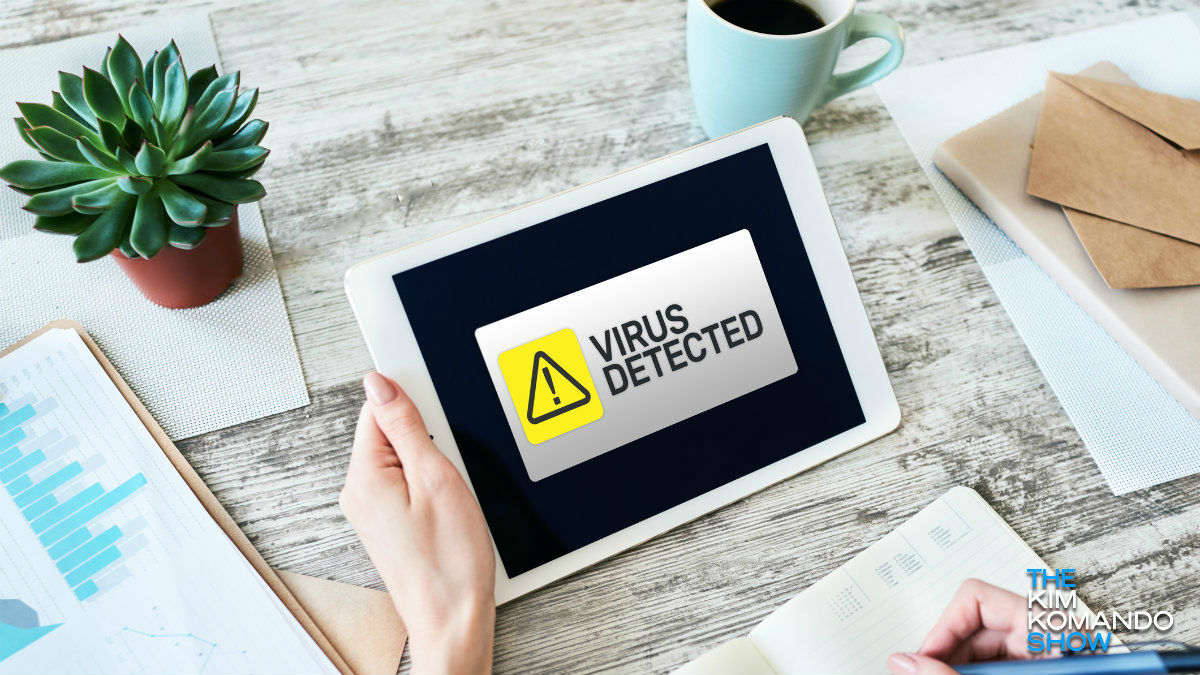Apple has made it really difficult for hackers to get into your devices. But despite the common misconception that iPhones and iPad are immune to malware, hackers do, in fact, have ways of infecting your iPhone and iPad.
The important thing is knowing the signs that you might have been hacked. Tap or click here to see the red flags to look for.
We understand how frustrating it is to hear this question, but we have to ask: Did you try completely powering down your device and restarting it? A reboot almost always fixes problems. If you’ve done that and you’ve still got issues, read on.
Signs you’ve got a bug or virus on your iPad or iPhone
A typical symptom of a problem with your device includes a sudden spike in your data usage. You might also have pop-ups that won’t go away or freeze your screen. Another common telltale sign is rapid battery drain.
Virus versus buggy app
If something feels off about your phone or tablet, it might not even be a virus in the first place. In fact, you may have a buggy app.
Do advertisements keep popping up on your screen? Does Safari redirect you to the App Store? If so, a hacker may have infected an app you’re using. Believe it or not, that’s good news — an app is easy to get rid of.
Keep track of the issues that crop up when you use your phone. Do these annoying problems only happen when a specific app is open? It could be possible that the app’s developer used an infected development kit.
If you’ve narrowed your issues down to an app, check the App Store to see if there’s a new version. You should also scan recent user reviews to see if others are experiencing the same issues you are. The developer may have a new version for you to download, or the version you’re using now might be the product of a buggy update.
If updating doesn’t work, it’s time to delete the app. Depending on the operating system you have installed, the process will vary:
iOS 13, iPadOS 13 and above:
- Touch and hold any app on the Home screen, then tap Edit Home Screen. The apps begin to jiggle.
- Tap X on the app you want to remove, then tap Delete.
- Tap Done (on iPhones with Face ID) or press the Home button to complete.
iOS 12, iPadOS 12 and lower:
- From your Home screen, press down on the app until all the apps start shaking.
- Locate the small X in the upper-left corner of the app you want to delete.
- Tap the X and tap Delete to confirm.
Reminder: To avoid problems on your iPhone or iPad, don’t jailbreak it. Doing so means you’re bypassing Apple’s built-in security measures to download unauthorized apps. Apps that aren’t in the App Store will not have been approved and deemed safe by Apple, which means you’re putting your devices, your privacy and your security at risk.
Bonus: Download the FREE Komando.com app from the App Store now!
Removing viruses
If you have a virus on your iPhone or iPad, there’s an excellent chance your phone was infected with an app that you didn’t find in the App Store. No matter how it got there, your next step is to get rid of it for good.
1. Restart your iPhone or iPad. Depending on your model of device, the process will vary:
iPhone 8 and later:
- Press and quickly release the volume up button.
- Press and quickly release the volume down button.
- Press and hold the side button.
- When the Apple logo appears, release the button.
iPhone 7 and 7+:
- Press and hold both the volume down button and the Sleep/Wake button.
- When the Apple logo appears, release both buttons.
iPhone 6S and earlier:
- Press and hold both the Sleep/Wake button and the Home button.
- When the Apple logo appears, release both buttons.
2. Clear your browsing history: Open Settings, then scroll down and tap Safari. Tap Clear History and Website Data, then tap Clear to confirm.
3. Restore your iPhone or iPad to a recent backup. Make sure your device is set to automatically backup. If it is, you can restore it to an earlier backup when you weren’t having problems.
To turn on Backup, open Settings and tap on your name at the top of the menu. Tap iCloud, then scroll down to iCloud backup. Tap it and turn the toggle to On to set up automatic backup.
4. Visit an Apple Store to see if they can help remove the virus. Back up your device beforehand, as it’s extremely likely the Genius will erase it and install iOS fresh.
5. Proceed with extreme caution: If all else fails, you can wipe everything off your iPhone or iPad and start over. That means you’ll erase everything from your smartphone or tablet and start from scratch. To do that, open Settings and tap General. Scroll down and tap Reset, followed by Erase All Content and Settings.
Keep your iPhone and iPad safe
With only a modest amount of effort, you can prevent viruses and buggy apps from getting on your device in the first place. Doing these two things will go a long way to keeping your iPhone or iPad virus-free:
1. Never jailbreak your iPhone or iPad, alter your hardware or software, or download unauthorized apps.
2. Keep your iPhone and iPad up-to-date with the latest versions of iOS and iPadOS. Open Settings > General > Software update to check if updates are available, and do so frequently. Keeping your device up to date is the best way to stay one step ahead of hackers and cybercriminals.
